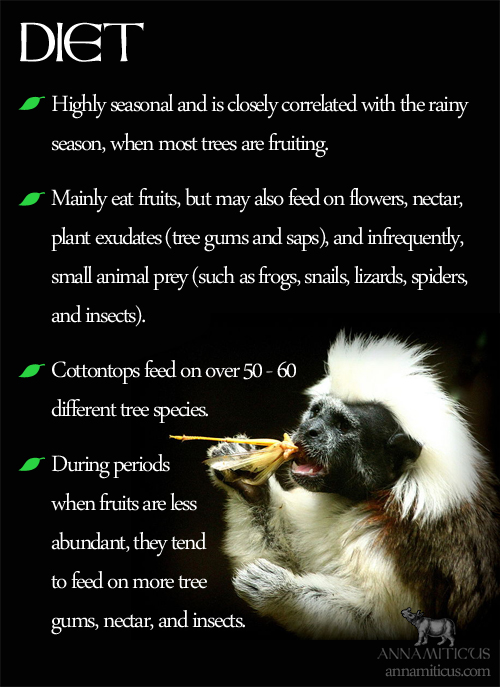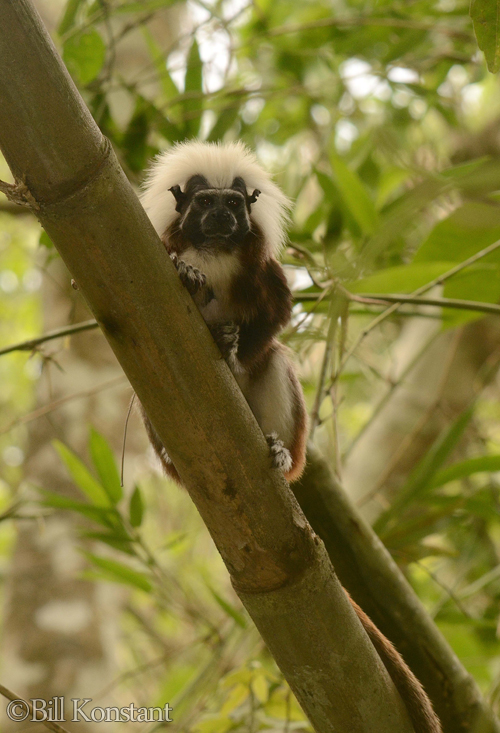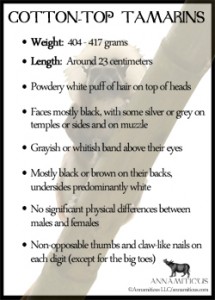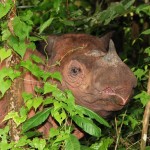A furby-like creature endemic to a small region of South America teeters on the edge of existence.
Cotton-top tamarins are small titi monkeys — roughly the size of a squirrel — that are found only in northwest Colombia.
They are classified as Critically Endangered by the International Union for the Conservation of Nature (IUCN) and today, there are only about 6,000 remaining.
These monkeys are found primarily in humid tropical forests that get lots of rain, but some also inhabit dry, deciduous forests with low seasonal rainfall.
Threats
Currently, the biggest threat to this species (like many others) is habitat loss and destruction.
As more and more forest is cleared for agriculture, fuel, and housing, these little titis’ habitat is continually shrinking.
Experts estimated some 75% of the species’ original range had been cleared for agriculture and pastures by 1978, and that the remaining forested areas inhabited by Cotton-tops existed only in small, isolated patches — with a main stronghold in Paramillo National Natural Park (PNNP).
Three protected areas where cotton-tops are found have suffered significant deforestation:
- PNNP has lost roughly 42% of its forested area
- Montes de Maria has lost 70% of its forested area
- Los Colorados has lost 71% of its original area
According to the IUCN, almost 200,000 hectares (494,211 acres) of forested habitat have been lost within protected areas that are dedicated to the conservation of cotton-top tamarins.
Today, less than 2,600 square kilometers (fewer than 1,004 square miles) of forested area inhabited by Cotton-tops is protected by the Colombian Ministerio del Medio Ambiente — and these areas continue to suffer from the pressure of sprawling human populations, natural resource extraction, and land clearing for agriculture.
The species was first listed as endangered in 1973, after 20,000-30,000 of them were exported to the United States for use in biomedical research.
These primates continue to be collected from the wild for the illegal pet trade, and this is considered one of the main threats posed to the species.
Role in the Ecosystem
Cotton-tops and other tamarin species are thought to be important seed dispersal agents in the rainforests they inhabit.
 The seeds of the fruits they eat are eliminated in their feces and may potentially grow into a new tree or plant wherever they land.
The seeds of the fruits they eat are eliminated in their feces and may potentially grow into a new tree or plant wherever they land.
Researchers have found a germination success rate of 70% in defecated seeds from two types of these titi monkeys.
This helps maintain the health of the forest ecosystem they live in, continually giving life to new vegetation.
Conservation
All export of cotton-top tamarins has been banned in Colombia since 1974 and the species is currently listed under Appendix I of the Convention on Trade in Endangered Species (CITES).
Proyecto Titi is the one and only organization exclusively working to save these monkeys, and has been doing so since 1985.
They use a highly effective, multi-disciplinary approach that involves community outreach and development, research, and education.
The NGO works closely with local communities in around the titis’ habitat, improving the quality of life for many of these people with innovative, eco-friendly projects and encouraging them to live more in harmony with their environment.
For example, Proyecto Titi has facilitated the establishment of a project they call ‘ASOARTESANAS’ — a collective of women who crochet beautiful tote bags (called ‘eco-mochilas’) from littered plastic bags.
The program has literally turned one man’s trash into another man’s treasure — and in the process, this helps to clean up the environment and benefits both the local woman involved and the Critically Endangered Cotton-top Tamarins. (Click here to get yours today!)
Proyecto Titi also runs educational programs in the urban areas of Colombia, with more focus on the impacts of the illegal pet trade, as this is where much of these activities occur.
Please visit the Proyecto Titi website for more information on this fantastic NGO.
Social Structure
Cotton-top tamarins are mainly diurnal (most active during the day), arboreal (spend majority of their time in trees), and quadrupedal (walking and running on all fours).
These monkeys — sometimes called callitrichids — usually live in social groups of between two and ten individuals, but sometimes more or less.
Most of these consist of a reproductively active male and female pair, subordinate adults, and juveniles.
Mature individuals are typically unrelated and may individually disperse to other nearby assemblies, which is largely driven by reproductive strategies (especially to avoid inbreeding).
Dispersing males tend to enter a group following the death of resident male.
Females may also, sometimes, be expelled from a group and will then go join another.
Reproduction
Typically, only a single male and a single female have breeding rights in a group, while other adults and juveniles serve as caregivers for young, gaining experience until it is time for them to breed too.
This is a unique trait that few primates exhibit and studies have shown that learning these parental behaviors may improve an individual’s future reproductive success.
Generally, male Cotton-tops reach sexual maturity at about 24 months of age, while females mature when they are around 18 months old.
Females will only ovulate in the presence of a novel male, which prevents them from breeding with related individuals.
They breed once per year, just before the rainy season and the birthing period seems to correlate with when foods are most abundant.
Their gestation usually lasts for roughly 144 days and litters typically consist of two babies.
All group members (including both sexes) attentively care for young.
Sources:
International Union for the Conservation of Nature. “Saguinus oedipus.” Accessed 15 June, 2012.
Proyecto Titi. “Proyecto Titi: Conserving the Cotton-top Tamarin in Colombia.” Accessed 15 June, 2012.
Image #1 ©Bill Konstant
Image #2 by Bill Konstant, adapted by author
Image #3 by Mickey Samuni-Blank (via Wikimedia Commons), adapted by author
Image #4 by Michael Gäbler (via Wikimedia Commons), adapted by author







